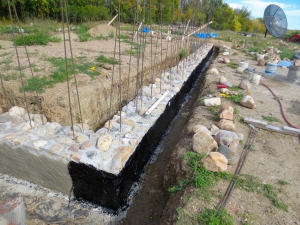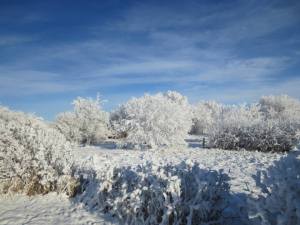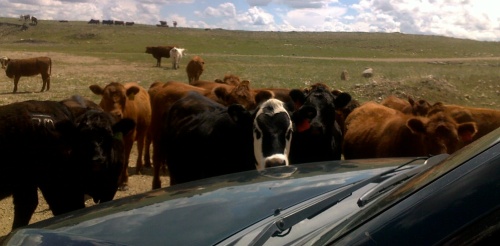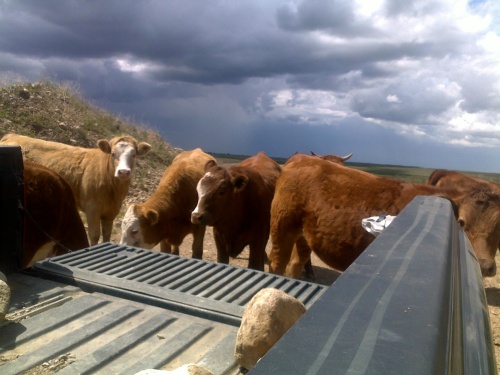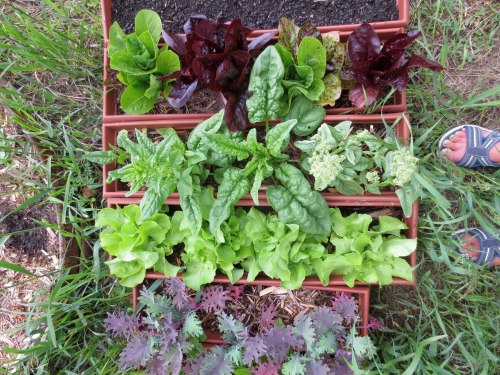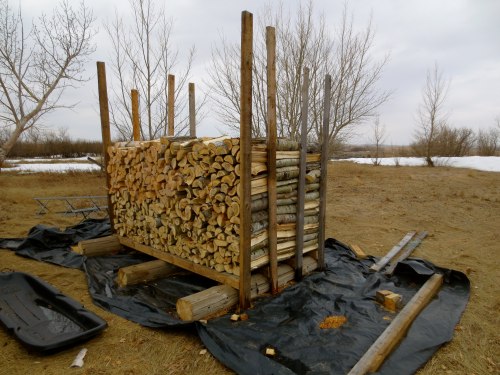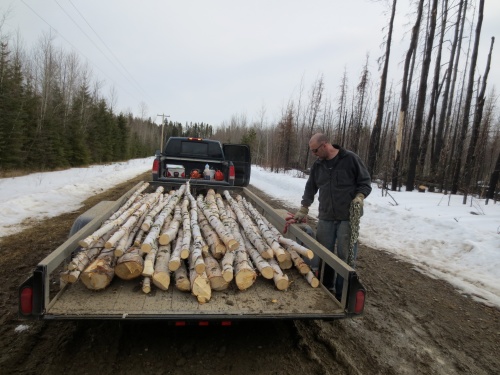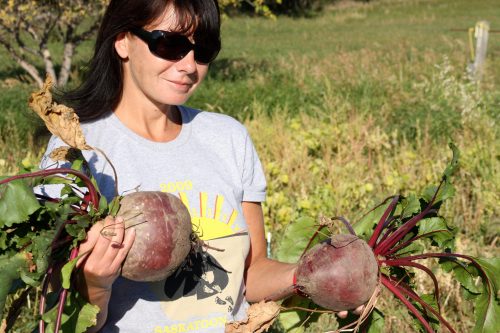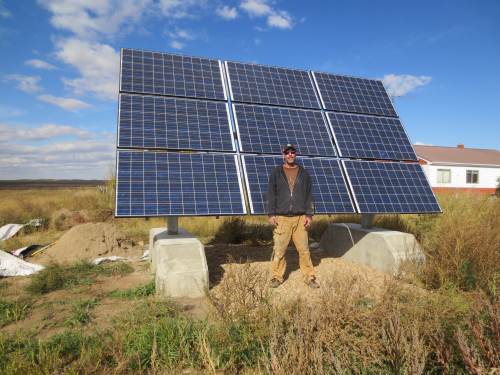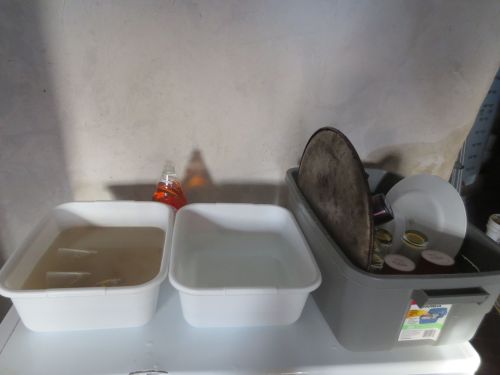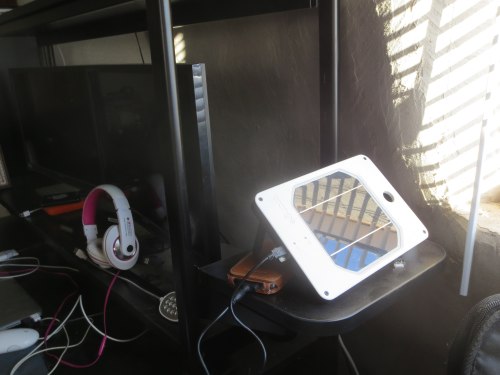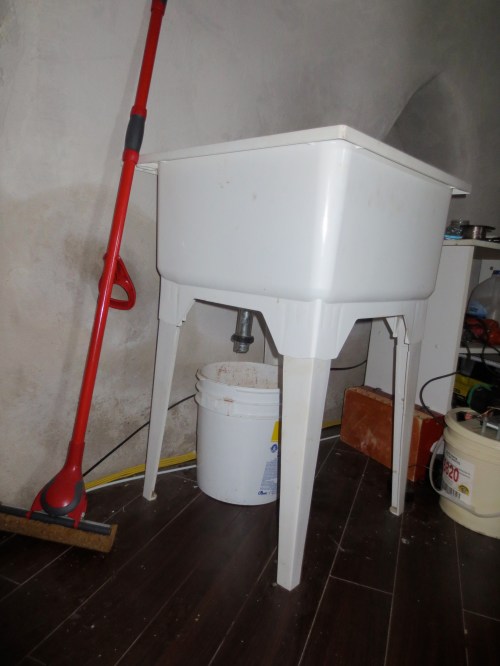I was planning on beginning a photo series on the rock house build but a reader has prompted me in a different direction. I’ll do one last one on the earthbag build, as I still think they’re a great building method. I’ve taken Lynn’s questions from a previous post and answered them below. Great questions, Lynn, I hope I’ve answered them for you.
I know you’re not building another earthbag house, but if you were to do it again, what would you do differently? what would you plan differently? Would you do bigger pods? Second stories? more pods, less pods? Did having all your pods in a row, (in a row, east to west) facing south, work for you? or if you were to do it again, would you have them in a row north to south?
Bearing in mind that when we started it was an experiment to see if we could build an earthbag house and partway through we decided we would move into it, absolutely- there are things we’d do differently. The single biggest change that I would have made is that I would have stuck with the original floor plan, waaay back when we were considering an earthship design. Forgoing pods altogether. No circular rooms but a series of partial U’s with a wide connective space. (*Our current plan is entirely different and isn’t round or U-shaped, but I’m answering based on what I would have done with earthbags.)
The decision to go with round rooms was multi-faceted but largely owing to the fact that we’d never built an earthbag structure (outside of a simple sauna) and wanted it to be as sound as possible. Round is easy to work with and extremely sound. But (for me) that’s where the advantages ended.
The rooms were plenty big, but not well-planned given our lifestyle and different interests. Not a lot of space for a person to go off and do their own thing. That was kind of the headspace we were in at the time but not reflective our personalities. I would not put in a second story because we heat with wood, and another level would quite possibly necessitate another heat source which would be a pain in the a*s to keep fed. Having said that, I would have made the decision not to put in a second story earlier. Our ceilings are as high as they are not simply due to my partiality to cathedral ceilings but owing to the fact that we had intended a second floor and abandoned the idea only partway through the build.
I would still align East-West with the biggest windows south facing- there’s no way I would recommend North-South in our part of the world (Alberta, Canada). That would result in plenty o’wind and next to no sun here, which would’ve been a disaster.
If the north walls had not been completely bermed, do you think you would have still had the humidity problem in summer? It sounds like you did not have a humidity problem in winter, what with the wood stove to dry things out, and in fact you needed to put water on the stove to add humidity (which I think is pretty normal when you’re heating with a woodstove). Do you think berming the north side is essential for staying warm in winter? If you could go back and put ventilation on the north side, how would you have done it?
I don’t think the berming had anything to do with the humidity. The walls are solid and a foot and a half thick and there are only windows on one side of the building, making air movement pretty much nonexistent. It was humid before we had a tractor and could complete the berming.
I don’t think berming is necessary, but that’s my opinion and you’ll hear (as we did) a lot of people insist that it absolutely is. And maybe in the Arctic it is- I don’t know. But I do feel that a lot of people south of us have some pretty wild ideas about what you need to do to weather-proof a “northern” home. We erred on the side of extreme caution and took all of those knowledgeable opinions on but I think some of it, like the berming, was overkill.
If I’d any idea how humid it could get, I’d have put small- carefully placed- windows on the north side. We were warned against north-facing windows for our climate and given our lack of experience we just went with that advice but in retrospect I’d have ignored it. Not tiny little vents but small windows.
I think in one of your posts you said you put a extra sort of pod on the north side of the pods for food storage… is that correct? did that work for you, or did you find that food froze in there? Did you find yourself wanting more room for food storage? Would you have made a bigger area for that?
We dedicated an entire pod to water and food/supplies storage. Because we rely on rainwater for drinking and cooking, we need to store our water over winter. The pod was off the kitchen, almost as far away from the woodstove as you could get, and a good sized room in itself (14′). We did have some freezing issues when we left for two weeks in the winter. Other than that, it stayed cool, probably around the 12-16 C mark throughout the winter (our winter temperatures range from 0 down to -40, the average being between -15 and -20).
A dream redesign of the entire thing (see our next house) would see the water stored in a protected area outside of the house and a small containment for root vegetables.
Do you think it would have been better to use insulation, or some insulation, in the building of the earthbag house? if so, in what areas?
Not really. We insulated the ceiling- I mean seriously insulated it- and I would highly recommend that. But I think insulating foot and half thick walls is overkill. There will be people who disagree but I’ve lived in the house, over winter, so my opinion is based on my experience. It takes for.ev.er. for heat or cold to move through those walls.
If you could do the roof any way you wanted, pretending that you have enough time to do it, how would you have done it? What way do you think is actually best?
I like the look of reciprocal roofs, but the standard gable is easy (relatively speaking). We took in a lot of opinions at the time and the general consensus from experienced builders was gable. Not as pretty but easier to work with (surprisingly, to us, given the rooms are round), easier to leak-proof, and to protect the walls.
You recommend not going with a natural plaster unless a person likes replastering every year. Do you think you would have had as much trouble with the plastering as you did, if you hadn’t put an initial coat on that had clay in it?
I’m not sure I quite understand this question. Had we gone with lime at the onset? Maybe. But lime is tricky to work with too. It’s not ideally suited for our dry, windy climate. Maybe on the interior but still… It’s a good amount of work and tending.
And I should say again, this is entirely subjective. I’ve met people who really love to plaster. They enjoy the process, some even find it meditative, they don’t mind tending it… I just don’t. I like to do things quickly and efficiently and then never do it again- that’s just my personality. And I’ve had mild arthritis in my hands since I was a teenager so I really don’t like tasks that require me to hold my hands and wrists in a particular way for hours on end, never mind repeat the whole process.
If I was doing it over, I’d have gone with cement. At the time we were trying to be as environmentally responsible as possible and weren’t even considering cement as an option. But cement- all the way. A good cement mix sticks to the bags really well, seals, dries nicely, isn’t finicky, doesn’t require patching… That would have been a better fit for me.
That’s my best shot at answering those questions and my last post on earthbag building. I hope that combined with my many other posts, I’ve covered off our experience adequately. The next posts will be on building with rock. Thanks, Lynn, for the questions and thanks to all of you for following and contributing along the way.


